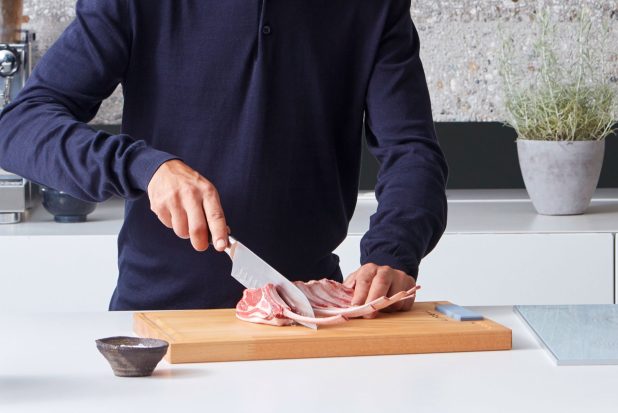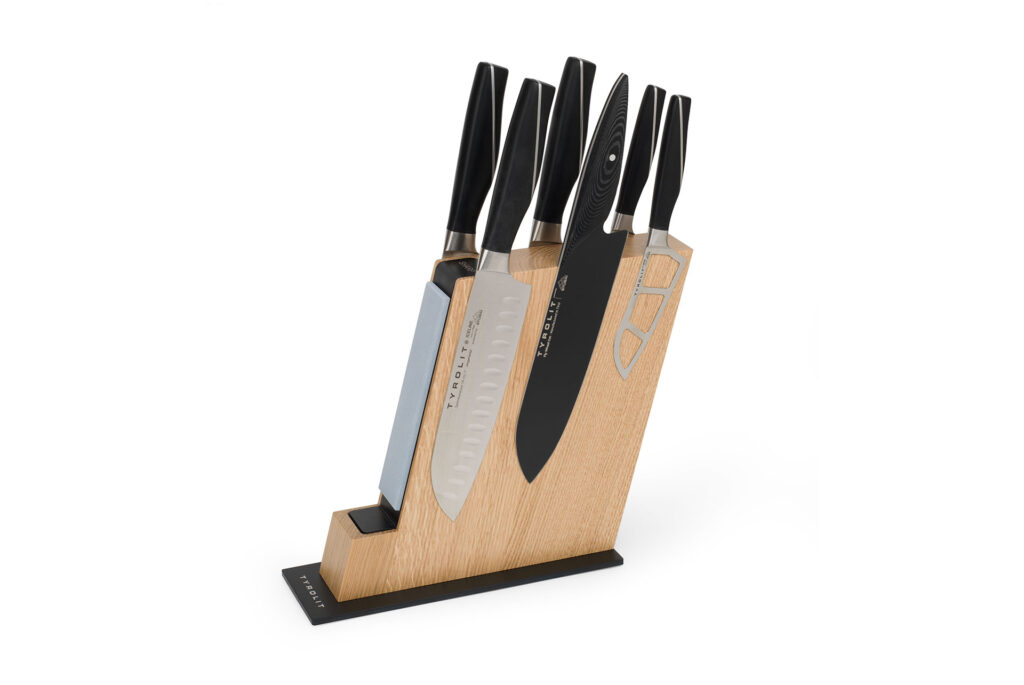What makes a santoku knife blunt?

A santoku knife is known for its sharp blade and precision, but over time even the best knife can become dull. There are various factors that can lead to blunting of the blade.
In this post, you’ll learn 4 of the most common reasons why a santoku knife blade can become dull and what you can do about it. At Tyrolit Life, we’ll show you how to keep your santoku knife sharp for many years to come.
4 Causes of Santoku Blade Dullness
The reasons why a Santoku blade can become dull are varied. However, it is essential to note: every knife becomes dull over time.
Apart from the quality of the knife, for which the foundation is already laid during its production, there are also causes that the user can influence himself. Here are 4 common causes of a santoku knife becoming blunt:
1. Frequent use
Every cut you make with your Santoku knife leaves microscopic traces. Over time, this consistent use results in the blade losing its original sharpness. Therefore, it is vital to sharpen your Santoku knife, ideally before every use. With Tyrolit Life’s convenient knife sharpeners, you can both sharpen the Santoku blade and adjust its burr. A blunt kitchen knife becomes a thing of the past.
2. Incorrect Cutting Surface
The type of surface you cut on plays a significant role. Hard surfaces like glass or ceramic can dull the blade quicker than softer materials like wood or plastic. Therefore, for your kitchen knives, opt for a high-quality wooden cutting board.
3. Improper storage
If knives are stored in a drawer without protection, they can rub against other objects and become dull. Use a blade guard or knife block here where you can store your kitchen knives properly.
4. Harmful cleaning methods
Washing knives in the dishwasher or using harsh cleaning agents can damage the blade and lead to premature wear. High-quality kitchen knives should be hand-washed and immediately dried after cleaning. Additionally, use standard detergent to remove food residues.
Why can your kitchen knives become dull quickly?
Julian from Let’s cook with Julian explains why your kitchen knives can quickly become dull and what you should pay attention to.
What are the effects of a blunt blade?
A blunt santoku knife can be quite a nuisance when cooking. You have to use more force to cut through ingredients, which is not only exhausting, but also affects the accuracy of cutting.
It sounds paradoxical, but a blunt knife is often more dangerous than a sharp one. Because you have to apply more pressure, the risk of slipping and injuring yourself increases.
In addition, if the knife does not cut properly, the quality of the food also suffers. Dull blades can destroy the structure of the food, which in turn affects the taste and appearance of the dishes.
In short – a sharp knife is not only more efficient, but also safer and ensures that the food tastes and looks as good as it should.

How can you sharpen your Santoku knife?
Sharpening your Santoku knife is a crucial step in preserving its exceptional cutting ability. With the knife sharpeners from Tyrolit Life, you can simplify and effectively manage this process. These sharpeners are specifically designed to achieve optimal sharpness for your knives with minimal effort.
Start by cleaning your knife. Make sure the blade is free of food debris and completely dry. Then gently pull the blade of your santoku knife at a 90-degree angle over the sharpening stone of the Tyrolit Life knife sharpener, starting from the handle to the tip. Repeat this process a few times to achieve even sharpness. Then repeat the process the same number of times with the other side of the blade.
The Tyrolit Life knife sharpeners stand out for their ease of use. Thanks to the preset sharpening angle of 15 degrees, perfectly suited for European santoku knives, there’s no need to be concerned about maintaining the correct angle. This significantly simplifies the sharpening process, particularly for those who lack extensive experience in knife sharpening. The premium grinding materials of the Tyrolit Life knife sharpener ensure that the blade is effectively sharpened without excessive material removal.
Another advantage of Tyrolit Life knife sharpeners is their durability and robustness, making them a worthwhile investment for any kitchen. They are compatible not only with Santoku knives but also with other types of knives. After sharpening, your Santoku knife will once again glide effortlessly through ingredients, turning cooking into a pleasure. There is a variety of sharpening stones available, differing in material, shape, and grit. Tyrolit Life offers knife sharpeners with stones featuring two distinct grits – 400 for coarsely sharpening dull knives and 800 for finely sharpening with regular use and for preliminary sharpening.
Safely store sharp blades – in the knife block for Santoku knives

Proper storage of your santoku knife is crucial to maintain its quality and lifespan. The Tyrolit Life knife block offers a perfect solution for this. Made from premium oak, this magnetic knife block combines safety, functionality and aesthetics.
Thanks to the built-in magnets, your knives are stored safely and gently. In addition, the integrated knife sharpener with its preset angle makes regular maintenance of your knives easier.
The Tyrolit Life knife block is not only a useful kitchen accessory, but also a stylish eye-catcher. Available in two elegant colour variants, silver and black, it blends harmoniously into the ambience of your kitchen and offers space for up to six knives with a maximum blade length of 23 cm. This knife block ensures that your santoku knives are safely stored, always sharp and ready for use at all times.
FAQs on What Makes a Santoku Knife Blunt?
Does the way I store my santoku knife affect its sharpness?
Can rinsing my Santoku knife in the dishwasher damage the blade?
Does cutting certain foods affect the sharpness of my santoku knife?

